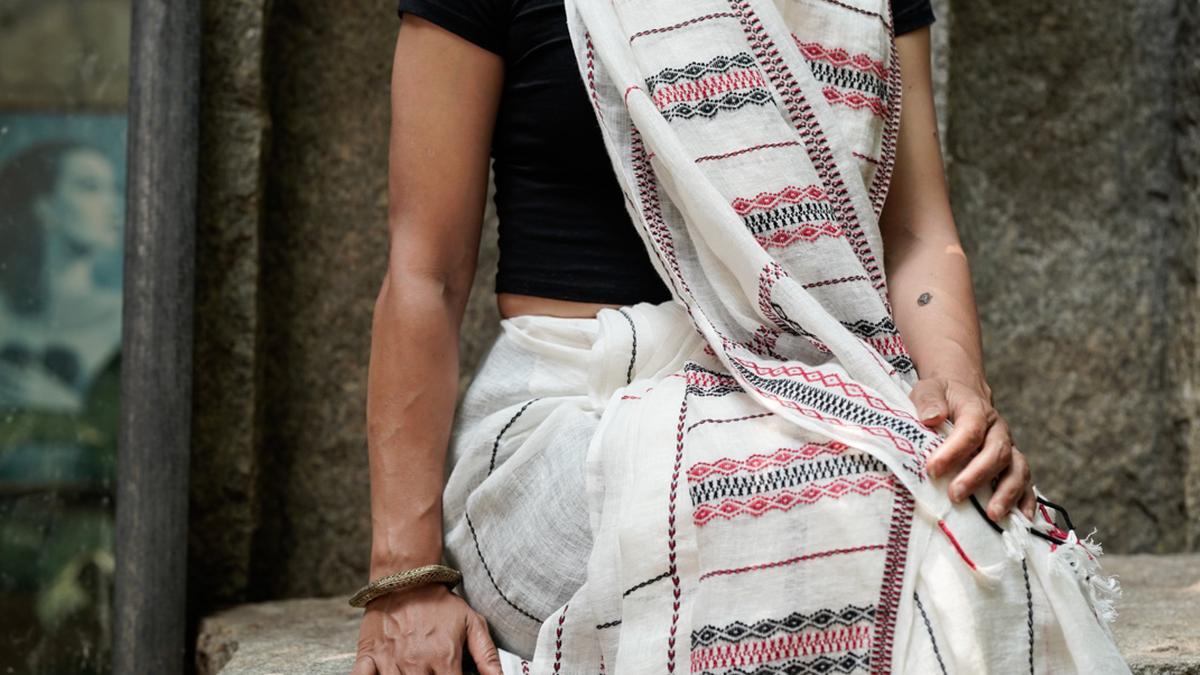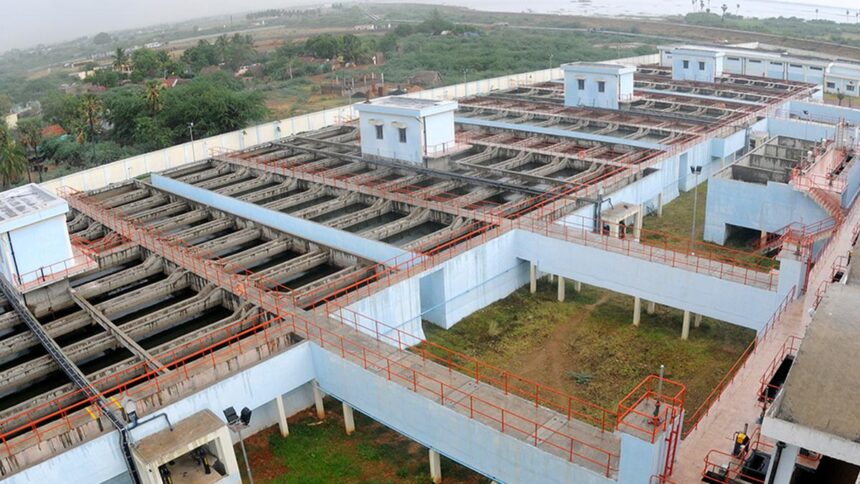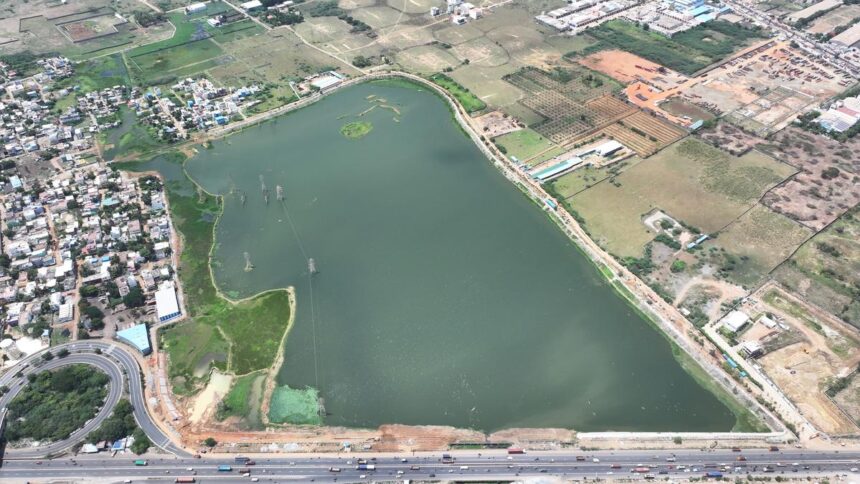Seated on the grasslands in remote hamlets, usually under the shade of a large tree, the Toda women of the Nilgiris engage in their art — a distinctive, Geotagged black and red embroidery — singing full-throated songs that talk of damp grass, warm sunlight, and mountain air. Deeply inspired by Nature, this intricate pukhoor (motif) embroidery meticulously follows the warp and weft of the base cloth, creating a stunning visual effect. Artisans count threads purely by touch, gently stretching the fabric as they stitch — a testament to their extraordinary skill and intuition.
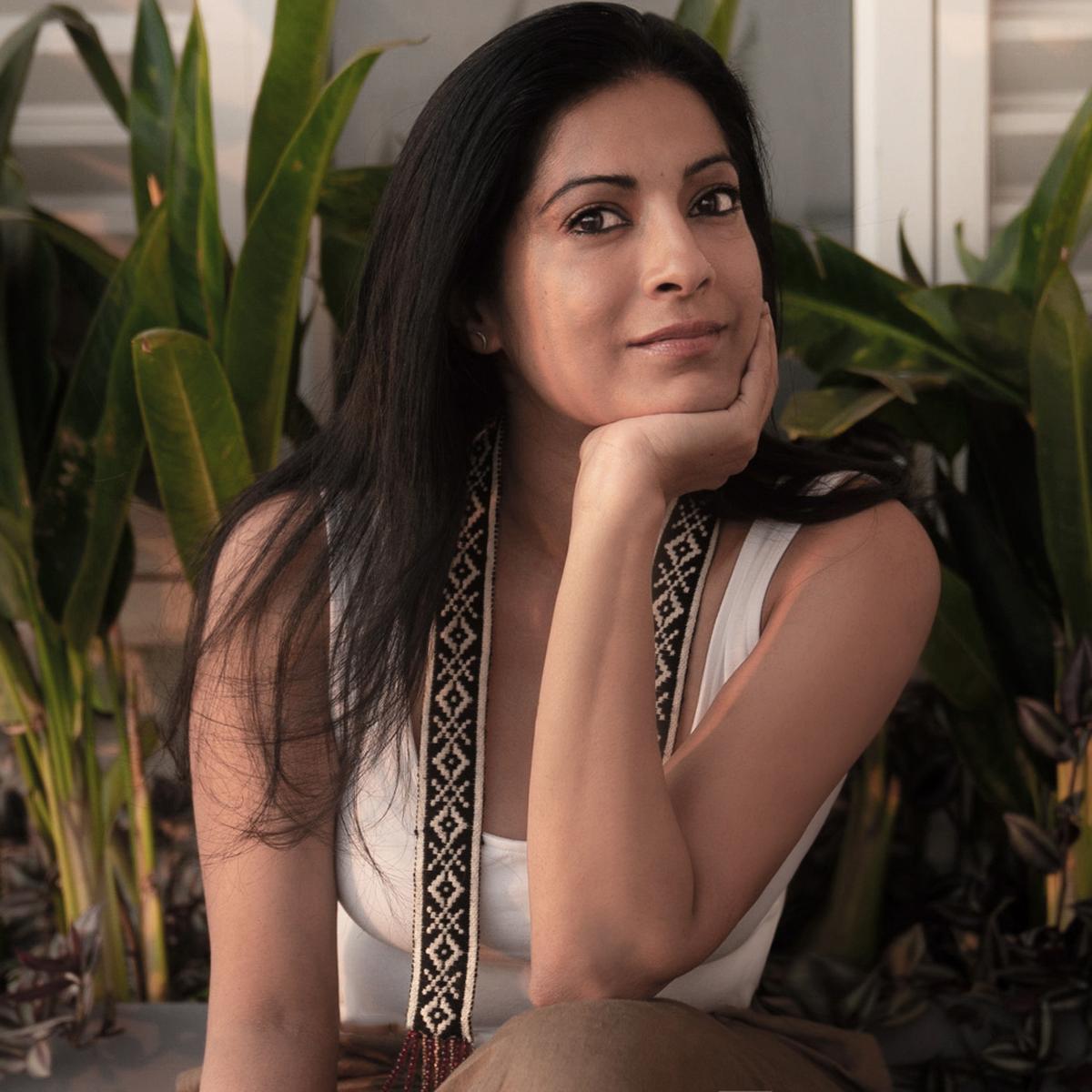
Ramya Reddy, author of the book Soul of the Nilgiris and founder of Coonoor& Co
| Photo Credit:
Special Arrangement
On August 29, Aadhyam Handwoven, a social enterprise that supports craft and weaving clusters, and Coonoor & Co, showcase a curated line of Toda shawls, scarves, home textiles, and linen saris, handcrafted by artisans at an intimate gathering in Hyderabad. “We have a full range of stoles and shawls on luxury fabrics. We are also unveiling an expanded home collection — a range that includes new designs on cushions, lumbar pillows, runners, and throws in soft cotton,” says Ramya Reddy, author of the book Soul of the Nilgiris and founder of Coonoor& Co, a slow life inspired journal and online store. Ramya will be in conversation with Anuradha Gunupati of Saptaparni and Dr Reddy’s Foundation, as she holds forth on the evolution of the exquisite geometry of Toda embroidery — it’s measured rhythms and lineage of hands.
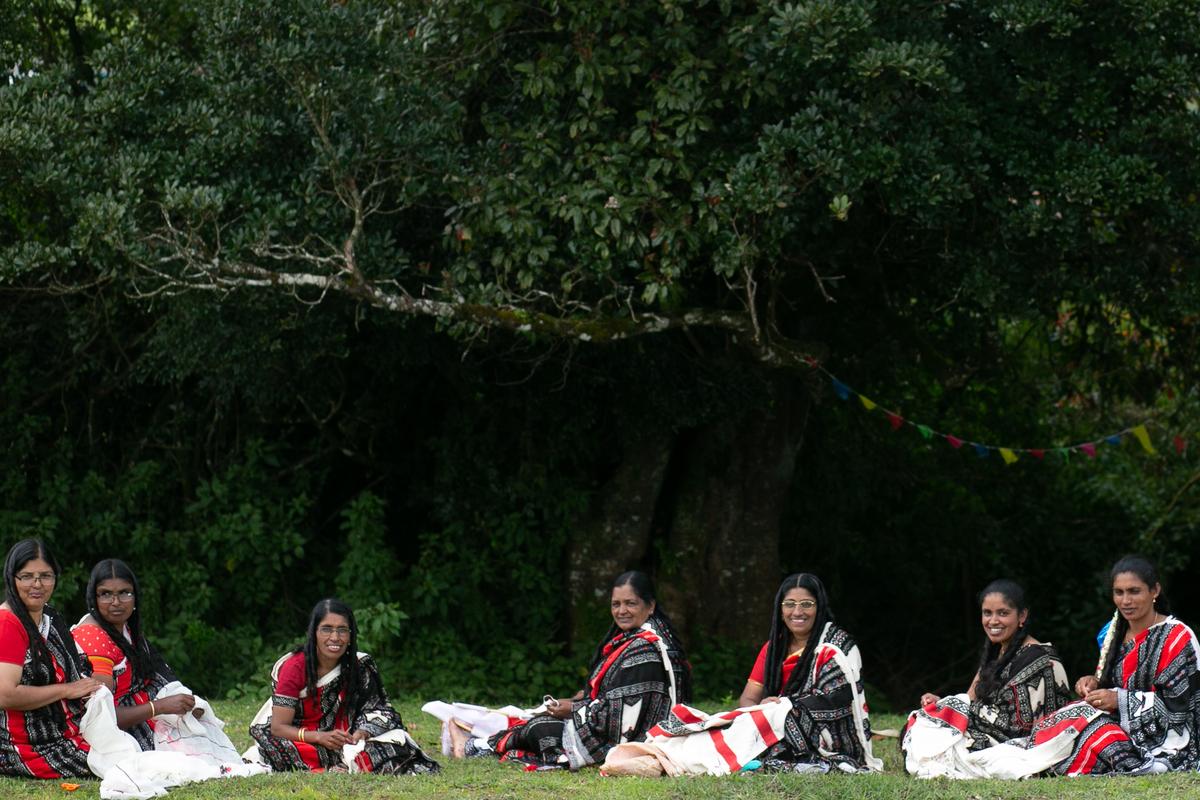
The artisans are encouraged to embroider their initials or names directly into the pieces
| Photo Credit:
Ramya Reddy
The first look of the Khadi line, a work-in-progress developed specifically for Toda embroidery, and another featuring block prints inspired by Nilgiris botanicals will also be showcased. “These prints, designed by our in-house designer, will appear across khadi and linen bases, and are envisioned to sit synergistically alongside the Toda work in future collections. We have been working with an indigenous community in West Bengal for our khadi and our block printers belong to an artisan community in Udaipur,” explains Ramya adding that another key component is art offering. This is a collection of hand-embroidered wall art, created through close collaboration between artisans and design team, showcasing both classic motif-based pieces and more abstract, conceptual expressions of the embroidery. One of the compelling examples is the reinterpretation of the puthukuzhy, the ceremonial cloak, as textile artwork.
The collection as a whole reflects a deeply collaborative process, one that respects lineage while making space for experimentation, she explains. “Three of our Toda artisans will be travelling with us to share this journey and also demonstrate the work.”
Residing in remote settlements in the Nilgiris, an ecologically rich UNESCO Biosphere Reserve in the Western Ghats, the Toda community is an ancient, pastoral, indigenous group. Here, amidst lush biodiversity, the Todas have maintained their cultural traditions over generations. With fewer than 1,700 Todas remaining and only about 500 artisans actively practising, preserving this embroidery is critical to maintaining their cultural identity.

The foundation of The Toda Project, Ramya recalls, lies in a long-standing relationship with the Toda community, going back over a decade, during the research for her book, Soul of the Nilgiris. “When the book was published, I felt so strongly about the community’s imprint on the project that we embroidered each spine (2000 unique spines!) with a unique, hand-stitched Toda motif. That gesture of letting the book carry their thread deepened my connection. I became particularly close to an elder named Mutsin: a wise, forward-thinking woman with a quiet but visionary outlook. Before she passed, she nudged me to think about what more this embroidery could become,” she explains adding that after Mutsin’s passing, her daughter-in-law Seeta picked up that thread — quite literally — and began to actively pursue ways to evolve the craft. Along with her sister Satya and artisan Anbu Lakshmi, they became the first collaborators. “They were curious, open to experimentation, and brought in a small group of seven women to begin our first round of work,” says Ramya, reflecting upon the genesis of the brand.
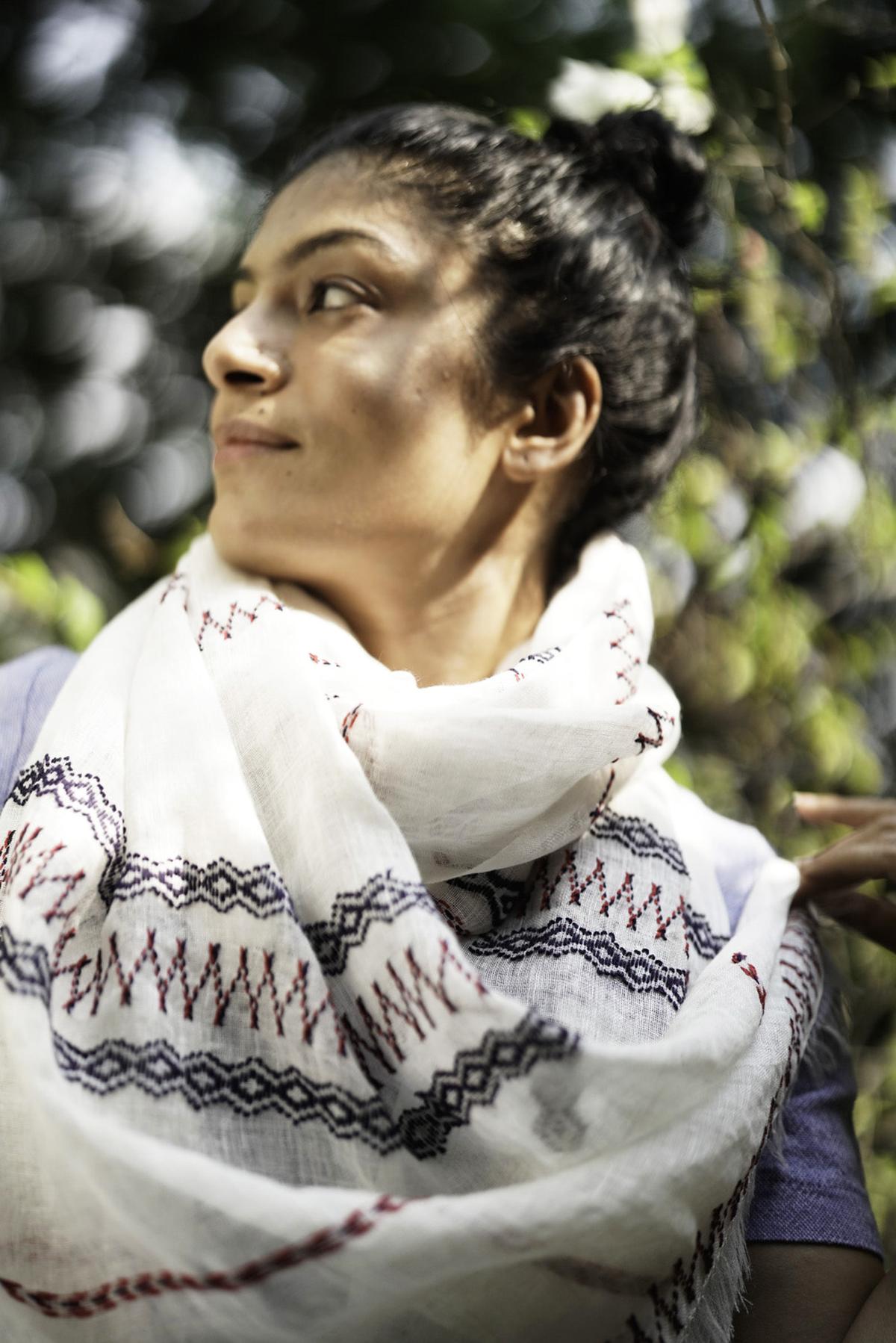
Linen stole
| Photo Credit:
Ramya Reddy

What began with seven women has grown into a collective of nearly fifty artisans — many of whom now consider this their primary source of livelihood. “The nature of embroidery is like inheritance, an astonishing geometry that is so perfect. Done entirely by hand, with a humble needle and thread—anchored in touch, repetition, and a kind of inherited intuition that borders on ancestral muscle memory. Both sides of the cloth can be used or displayed, something quite rare among global embroidery traditions,” explains Ramya. She began a long process of experimentation, testing various fabrics, consulting with weavers across the country, and iterating on weave structures that could accommodate the unique demands of the embroidery. One of her early breakthroughs was with a cotton-merino wool blend, which offered the right structure and a gentle hand-feel. She launched the first range of shawls and stoles in 2023 and later expanded into home textiles and saris on these fabrics.

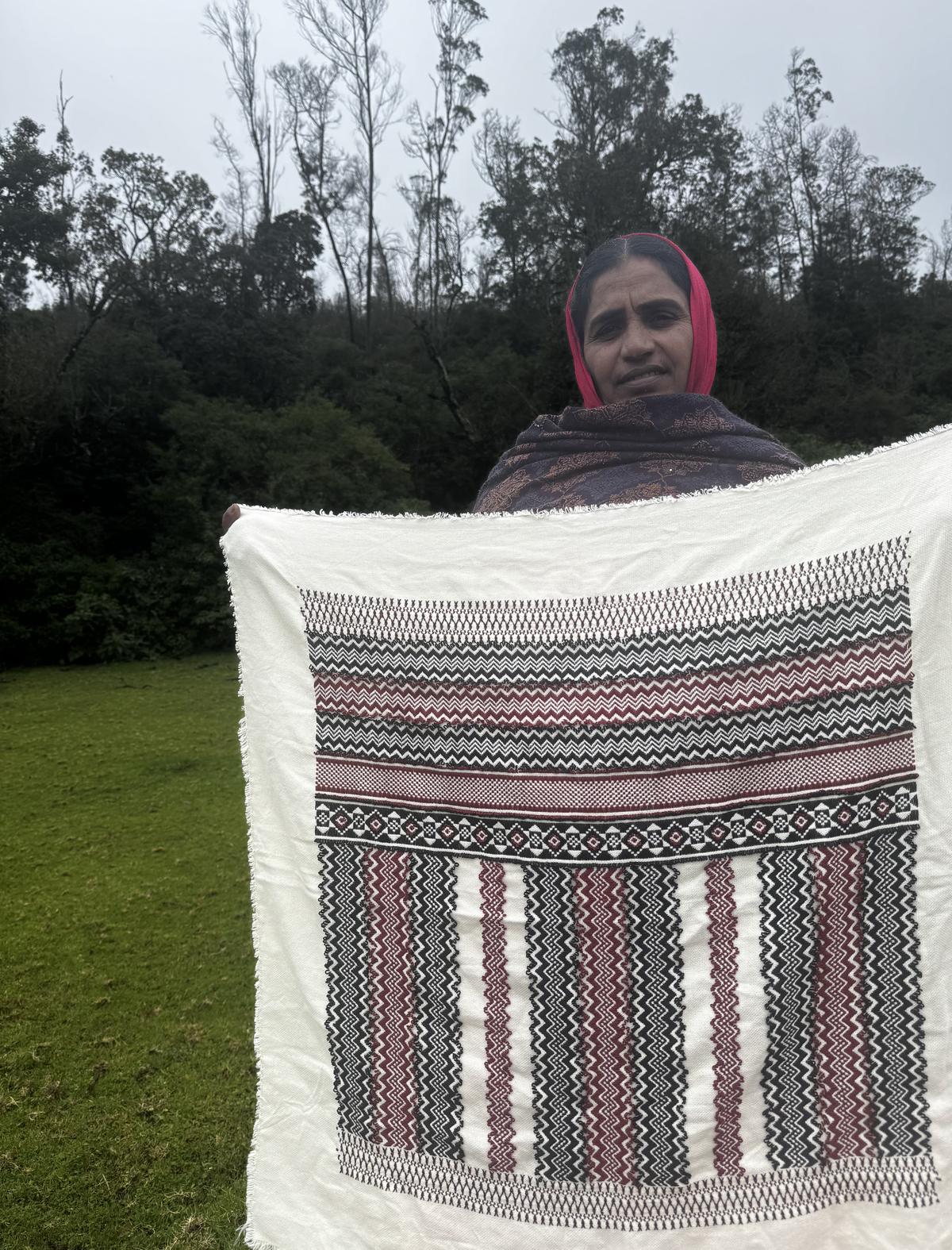
Senior artisan Anbulakshmi with her wall panel
| Photo Credit:
Coonor and Co
“Each piece carries the imprint of place and memory. The Toda embroidery language is entirely rooted in the landscape, the mountain ranges, specific flowers of the Shola forests, butterflies, elements from sacred rituals, and even the clay lamps used in temple ceremonies. The motifs are passed down, but always interpreted anew. We now encourage artisans to embroider their initials or names directly into the pieces,” says Ramya and pauses to discuss the challenges. As Toda women live in remote, dispersed hamlets across the Nilgiris, some of which aren’t even accessible by car, it affects every aspect of the work — from quality control to process design. To add to this, there are erratic phone and internet connectivity, sudden weather events that block routes or delay travel, and the rhythms of community life. Weddings, funerals, and other large gatherings often draw entire hamlets together, making it impossible to keep a strict production calendar.
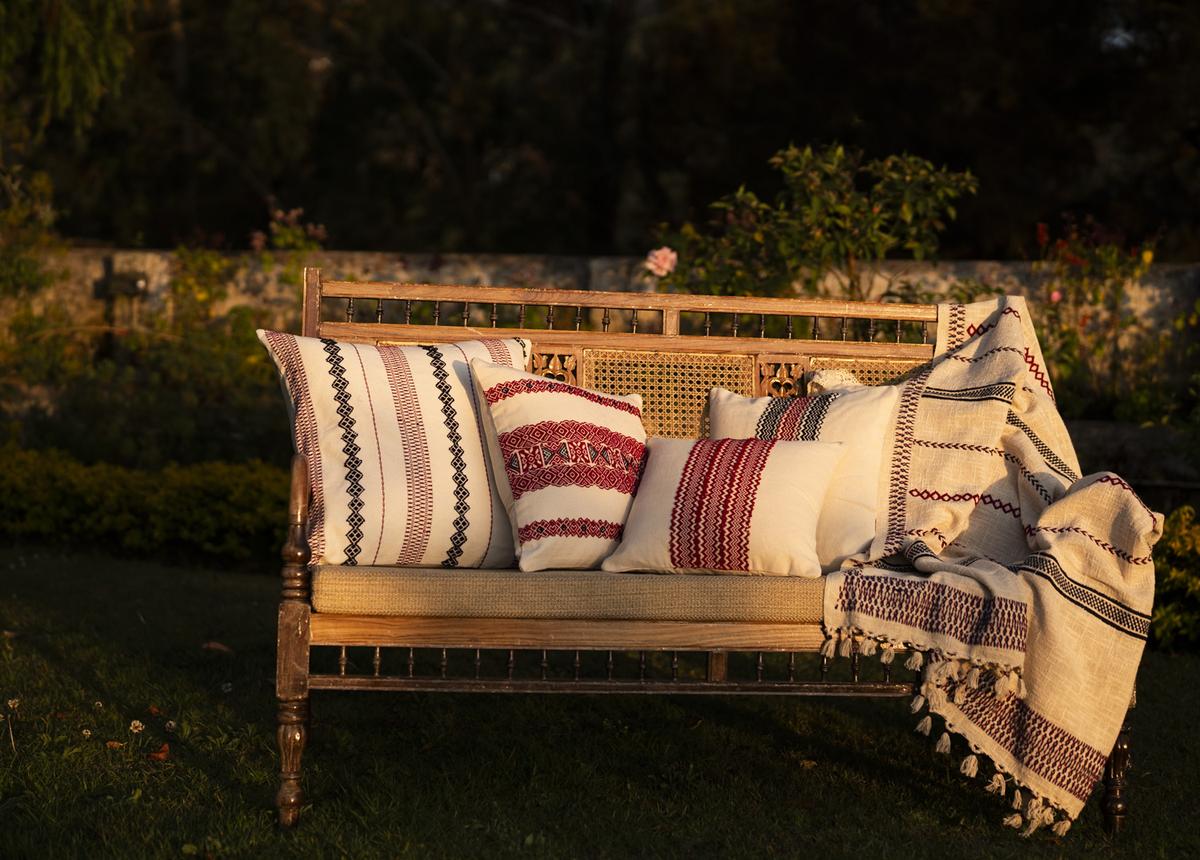
Home range collection includes new designs on cushions, lumbar pillows, runners, and throws
| Photo Credit:
Ramya Reddy
“That’s also why the work is so meaningful. The embroidery continues to happen in situ — within the hamlets, surrounded by the Shola forests and the sacred mountains. The women work communally, sitting together under trees or on verandahs, and the work holds the spirit of that land: its light, its rhythms, its stories. The process is slow, layered, and deeply human,” she says, adding, “The joy lies in watching the work take root in the way they live —not by imposing external timelines, but by finding a rhythm that allows the embroidery, and the women behind it, to truly thrive.”
The Art of the Toda is happening at Saptaparni, Banjara Hills, Hyderabad on August 29, 6pm. The exhibition remains on view till August 31. Visit coonoorandco.com
Published – August 28, 2025 04:30 pm IST







